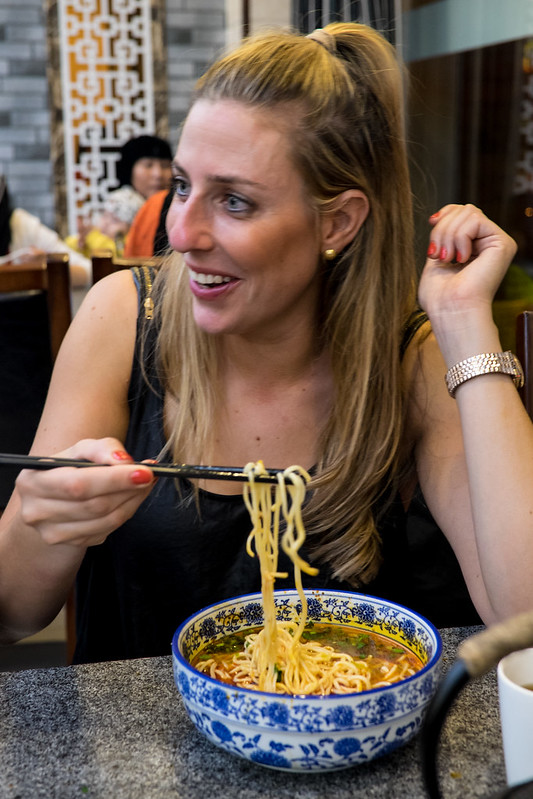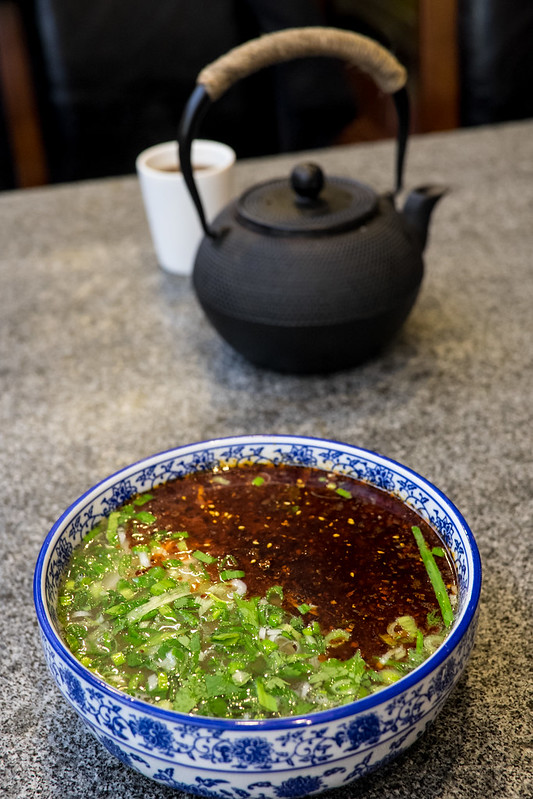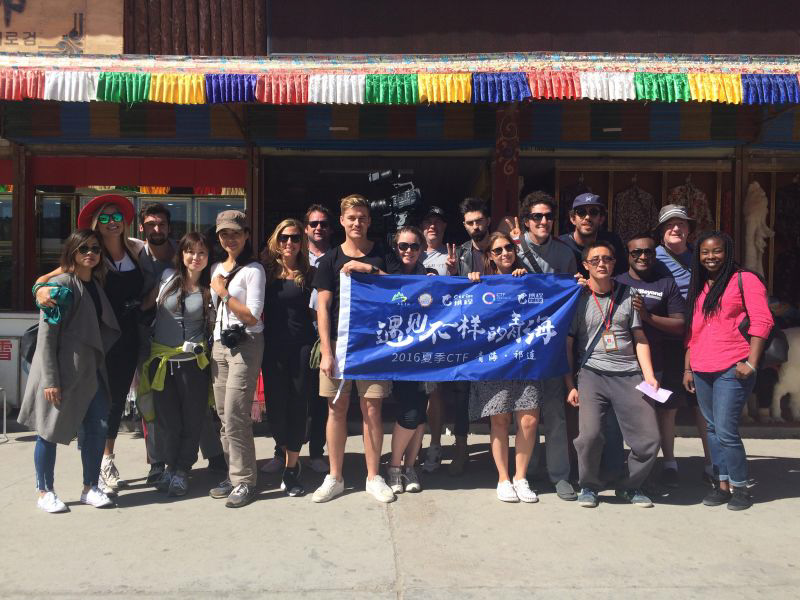人
Sightseeing and food are important parts of travel, but truly memorable experiences are always enhanced by the people you meet. People of Qinghai have had little contact with Westerners, and your presence brings out their smiles and curiosity. Locals would snap shots on the sly, and when we would approach them to reciprocate, no one had a problem. Here are some of my favorite shots from the trip, with a bit of ramen thrown in.

The monk with a $3000 camera and a Rolex.

The old guy just flying a kite.

Our group was
always getting asked for photos. Since we are all bloggers and
YouTubers, no problem! Here Abigail from
Smiling Seoul takes her hundredth photo of the day. Check out here channel for an interesting view on living in Korea.

The dinner singers. We kept chanting for
one more. After about five encores they ran away.

The hat salesman.

The Tibetans. You are meant to bow 100,000 times. They each have a counter on their finger (or an app on their phone) to keep track. Takes a few months for someone in good shape.

The staff at a Mongolian-themed show.

Candy getting her slurp on. Candy is the girl behind
On The List Melbourne. Check it out if you are in Melbourne and want to know everything that is going on!

Dane from
The Healthy Tradie knows that even an uber-healthy diet can include some carbs from ramen.

This was my favorite ramen of the trip. On the corner of Wusi and Jianyan in Xining if you are ever out there.

Simple, Lanzhou-style beef noodle soup. I'm not sure if it is standard, but they brought out some plates of snacks; veggies and tofu flavored with spice, garlic, and vinegar.

Others on the trip that I haven't mentioned are Maria from
The Art of Plating, Jasmine from
My Berlin Fashion, and Megan from
Mapping Megan.

The chess players.


The grandpa and child. Baby was really fascinated with my camera, so I let him press the shutter.

Baby's first shot!

The drone pilot.

Drone = instant popularity. Take note.

The curious toddler.

The curious young men. They were fascinated how we were documenting our trip.

The mullet dude. Business in the front, party in the back.

The Scott Gomez jersey dude.

The dancer.

The DJ.

The unknowing Abbey Road walkers.

The munchkins.

The fashionable one out.

The goofy performer.

I always search for the most hipster cafe in whatever town I am visiting. This time I was lucky enough to be joined by Chris John Millington, one of the guys responsible for epic beards becoming a fashion trend. Check his website,
Forget Fashion.

Thanks for posing!

The barista. His cafe, which I can't find on the map, was on Switzerland Street in Qilian.

The future bad-ass.
And then, just when I had forgotten why I came, this lady came strolling by, with bags full of noodles.

Sure, thousands of years have done a lot for noodles, and I still think Japanese ramen is where my heart slurps, but seeing how ingrained noodle culture is in culture here is amazing.
Although I can't recommend any exact shops, I can give a solid tip. Look for the ? shop with a crowd, and slurp where slurping all began.




































































